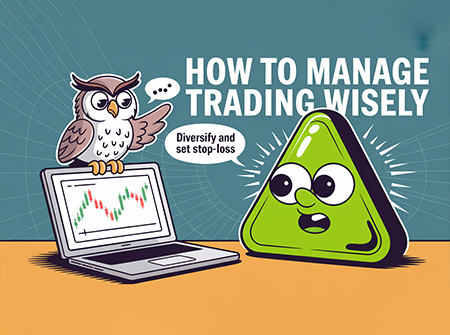Top Risk Management Strategies
1. Use Stop-Loss and Take-Profit
Never trade without a stop-loss. A good ratio is:
- Risk-to-Reward (RR) = 1:2 or 1:3
- Example: Risking 50 pips to make 100 pips.
2. Position Sizing
Calculate lot size before entering a trade.
- Example: With a $1,000 account, risking 2% = $20.
- At 20 pips stop-loss, you trade 0.10 lots.
3. Diversification
Don’t put all capital into one pair. Trade across multiple pairs to spread risk.
4. Avoid Over-Leveraging
Beginners should not exceed 1:200 leverage until they are consistent.
5. Continuous Learning
Markets evolve. Stay updated with analysis, trading psychology, and risk tools.
Practical Example of Risk Management
Imagine you have a $500 account.
- You risk 2% per trade = $10.
- Your stop-loss is 25 pips.
- Pip value for 0.04 lots ≈ $0.40/pip.
If the trade goes against you, you only lose $10, keeping your account safe.
Repeat this process consistently, and your account can survive long-term while compounding profits.
Forex Risk Management Checklist
- Never trade without stop-loss.
- Risk ≤ 2% per trade.
- Avoid trading during major news (unless experienced).
- Choose regulated brokers.
- Keep a trading journal.
- Manage emotions before trading.
Forex trading is a high-opportunity, high-risk market. Success depends not on predicting the market perfectly, but on managing risks wisely.
The main risks include leverage, volatility, broker reliability, liquidity, psychology, and technical issues. With the right strategies—stop-loss, position sizing, diversification, and emotional discipline—you can minimize losses and maximize long-term gains.
Remember: Trading is not about winning every trade, but about protecting capital and staying consistent. Claim $50 Welcome Bonus Now.




